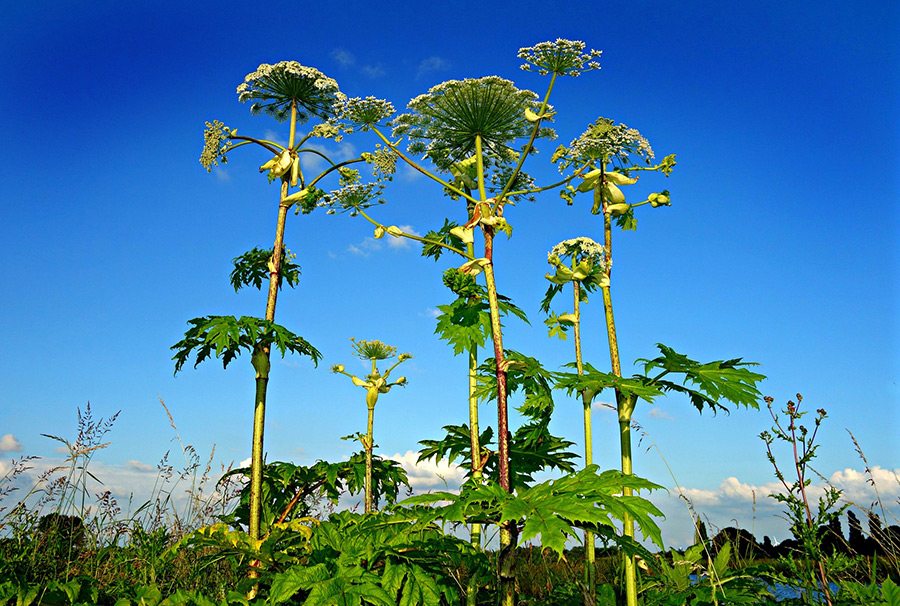WELLINGTON COUNTY – Landowners with parcels under 10 acres have until June 1 to rid their property of noxious weeds before the county’s weed inspectors could take care of the job, potentially resulting in a bill to the landowner.
There are 25 noxious weeds on the province’s official list, but most notable is giant hogweed, the county’s biggest problem over the past couple years, according to Brad Carberry, one of the county’s two weed inspectors.
Giant hogweed will grow for more than two years, seed and then die.
The weed’s sap on human skin, once hit by the sun’s UV rays, can cause burns.
“Depending on individual sensitivity, effects can last for months and skin can remain sensitive to UV light for year,” an Ontario Ministry of Agriculture, Food and Rural (OMAFRA) affairs webpage reads.
A study, in conjunction with OMAFRA, recommends a committed assault on the stubborn plant.
“The most appropriate time to remove plants is in late April or early May as plants are typically less than 30 cm in height, are easier to dig up, and more susceptible to herbicide applications,” the study paper reads.
“Extreme heat and humidity are also avoided which make wearing appropriate protective clothing more comfortable.”
On the attack
Using a shovel, the plant’s taproot should be dug up and left on the ground and covered with landscape fabric and mulch to avoid contact and simply allow the plant to degrade.
The second step is to spray the weeds with products containing the herbicide glyphosate.
“Glyphosate is non-selective, will kill most plants and leaves bare soil for a short period of time, which is ideal for new giant hogweed plants,” the paper reads.
Through June, it’s on to surveillance, keeping an eye for regrowth.
If not managed by July, the now towering plants will have declared victory over your land.
Under the Weed Control Act, all landowners are responsible to keep their property free from noxious weeds regardless of the size of land or time of the year, but the county’s annual newspaper notice (required under the law) only pertains to parcels of land under 10 acres. The June 1 date is set by the county.
While the county’s weed inspectors do have authority under the Act to enter onto property to search for noxious weeds, Carberry said, “every effort is made to work with the property owner to result in voluntary destruction.”
“The county relies on the public and private landowners to contact us regarding the reporting of noxious weed sightings,” Carberry said, adding that each situation is handled independently.
To destroy noxious weeds, landowners can:
• pull plants from the soil
• cut roots or stalks of a plant before it seeds
• plow the soil where weeds grow
• treat with an herbicide
The disposal of weeds varies depending on species.
For more information, residents can visit www.wellington.ca/en/resident-services/weedinspection.aspx or call 519-837-2600 ext. 2120.




